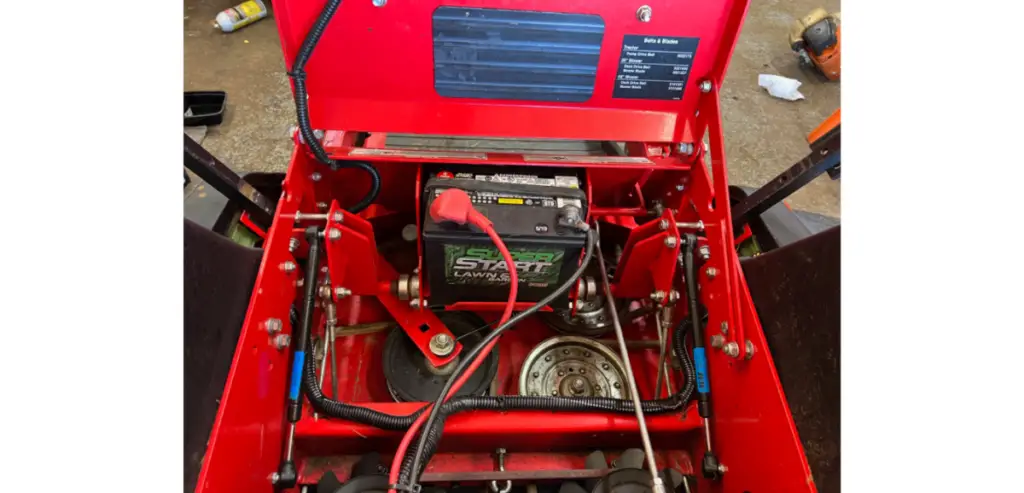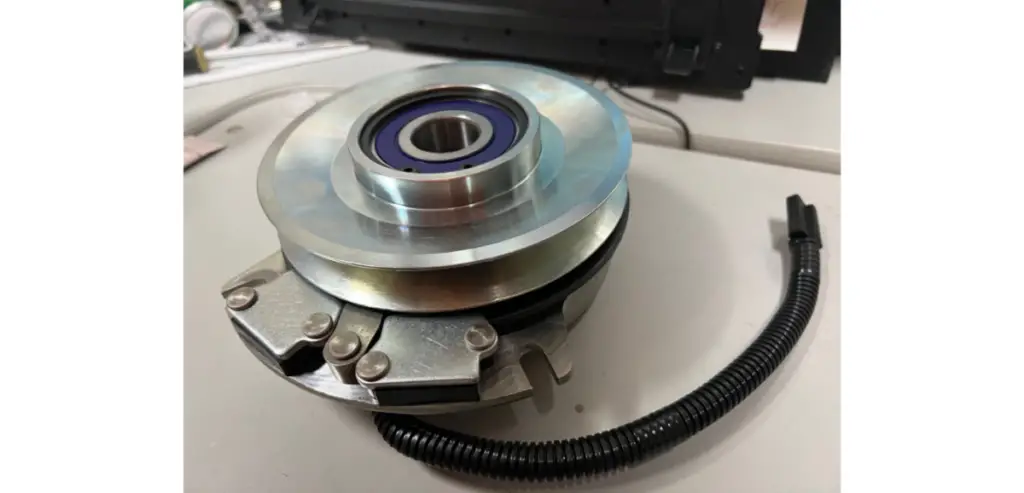
Lawnmowers are complicated pieces of power equipment necessary for maintaining a lawn properly. However, each component of a lawnmower needs to be working as intended for the lawnmower to function correctly. One particular component that can be problematic is the lawnmowers battery.
The function of the lawnmower’s battery is to start the lawnmower and to provide power for the lawnmower’s electrical functions. These functions included engaging and disengaging the lawnmowers cutting blades.
If a lawnmower’s battery is not functioning correctly the mower will usually not start. However, in cases where the lawnmower was able to be started, the battery may not be able to keep the PTO clutch powered and the lawnmower will die. A working battery is absolutely critical in the operation of a lawnmower.
A dead or weak lawnmower battery can be attributed to loose battery cables, a dead battery cell, a malfunctioning stator, or a bad regulator.
Lawnmower Battery Cables Loose

One of the most common causes of a dead or weak lawnmower battery is a loose battery cable. If a battery cable is loose on either the positive or negative side the battery will not start the lawnmower in most cases.
If your lawnmower battery is not responding to the ignition key the first thing to check is how tight the battery cables are connected to the battery. If the cables are able to move at the connection point of the nut and bolt on the battery terminals then your cables are not tight enough. Simply get the appropriately sized end wrench and tighten the nut and bolt. The typical size end wrenches for battery cable nuts is 7/16″ and 1/2″.
Lawnmower Battery has a Dead Cell

Everything we use will eventually fail or wear out. Lawnmower batteries are not exempt from failing like any other product.
If your lawnmower battery will not maintain or take a charge of over 10.5 volts chances are your lawnmower’s battery has a dead cell. If this is indeed the case the only way to fix this is by replacing the lawnmowers battery with a new one. In my experience lawnmower batteries typically last for around 2 years. There are cases where a battery can last longer but the norm is about 2 years.
Lawnmower’s Charging System Not Charging

The battery on a lawnmower has to be maintained by the charging system of the lawnmower. If there was no charging system on the lawnmower the battery could not maintain its charge and the lawnmower would not be able to operate.
The charging system of a lawnmower is comprised of a stator and regulator. Both of these components are required for the charging system to function.
The stator is essentially the alternator of the lawnmower. The stator is located under the flywheel of the lawnmower’s engine and generates its power from the rotating magnets of the flywheel.
A typical stator on a lawnmower engine outputs around 27 to 30 AC volts.
The AC volts generated by the stator need to be converted to DC volts for the lawnmower’s electrical system. This function is handled by the lawnmowers regulator.

The regulator takes the 27 to 30 AC volts being output by the stator and converts it to DC Volts. Once the AC volts are converted to DC Volts the power is then fed back to the battery to keep it charged.
There are some cases where the above-listed issues may not be the cause of a dead battery. Some lawnmowers route the charging circuit through various components such as ignition switches and PTO switches.
If none of the issues above correct the problem check to see if your particular lawnmower routes the charging circuit through one or more components like an ignition switch. The easiest way to determine this is by looking at the lawnmower’s electrical schematic. In most cases, the electrical schematic can be obtained in the owner’s manual.
What keeps draining my Lawnmower Battery?

The battery of a lawnmower needs to be constantly recharged while the lawnmower is in use. If the battery is not being recharged properly it will eventually die.
The biggest drain on the battery of a lawnmower is the electric PTO clutch. Typical PTO clutches draw approximately 4 to 5 amps when engaged.
If the lawnmower’s charging system is not feeding power back to the battery sufficiently the PTO Clutch will drain all the power from the battery.
Do Lawnmowers have Alternators?
Automobiles have alternators to keep their batteries charged but what about lawnmowers?
Lawnmowers do have alternators similar to cars but they are called Stators.
The Stator is the circular copper wound part that is located under the engine’s flywheel. As the flywheel turns its magnets interact with the stators copper windings to generator AC volts. The AC volts are then sent to the engine’s regulator to be converted to DC volts to power the lawnmower’s electrical system and keep the battery charged.
Wrapping Up
The battery of a lawnmower is a critical part of the machine. If the battery is dead or not staying charged the lawnmower is nothing more than a giant paperweight.
The most common causes of a dead lawnmower battery are loose battery cables, dead battery cells, or a non-functioning charging system that is composed of a stator and regulator.
When troubleshooting a dead battery I always start by checking to see if the battery cables are able to be moved by hand. If they can be moved that’s more than likely the cause of the dead battery.
If the cables are tight I use a battery tester to check and see if the battery has a dead cell.
In the case that the battery is testing good I move on to checking the charging system with a voltage meter. Set the voltage meter to AC and check the stator’s output, which should be 27 to 30 AC volts.
If the stator is checking good I move on to the regulator. Set your voltage meter to DC volts and check the output of the regulator. Typically the output of a regulator is 13 to 14.5 DC Volts.
If the battery charging problem is still not corrected you probably have a malfunctioning switch. Typical switches that can cause charging issues are ignition switches and PTO switches.
If you cant pinpoint the source of the problem you may need to take your lawnmower into a service shop.
Have a great day and be careful operating your power equipment.

